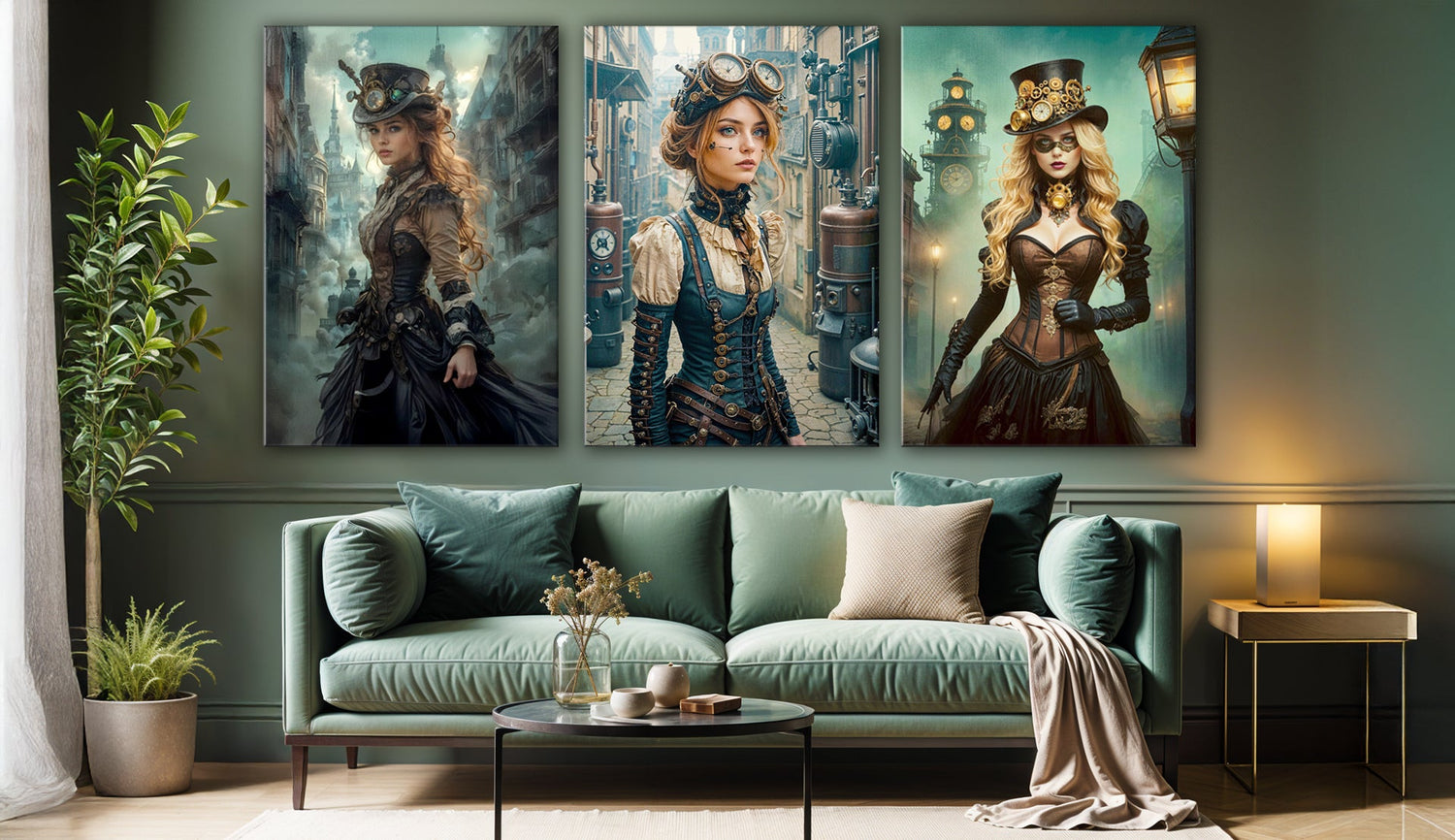
Mood Board Magic: Spark Your Space with Colorful Art
Have you ever found yourself scrolling through design inspo late at night, screenshotting dreamy rooms but hesitating to make the first move? You’re definitely not alone. Even the most enthusiastic design lovers sometimes freeze when it’s time to actually pick a piece of art or commit to a color. With so many options, the fear of getting it “wrong” seems almost inevitable. Here’s the good news: creating a mood board can make the whole process more playful, less intimidating, and surprisingly collaborative—whether you’re working solo or involving the whole family.
Let’s look at how you might start with a single acrylic wall art print, build a color palette around it, and bring your decor vision to life—all before spending a dime on paint or furniture. It might just be easier (and way more fun) than you’d think.
Step One: Let the Art Lead
While many people still begin with wall paint or sofa fabric, it’s increasingly common to choose the art first—especially if it’s a bold acrylic print. Why? Artwork, with all its layered colors and shifting tones, can set the tone for an entire room. It might seem risky, but in practice, building your mood board around a statement piece can result in a space that feels more cohesive and personal.
How to Start:
Pick a piece you genuinely love. Maybe it’s an abstract wall art print bursting with neon, or perhaps a botanical wall art piece that whispers calm. Grab a high-res image (or take your own photo if it’s already yours) and upload it to your mood board app, or just print it out for an analog board.

Step Two: Pull Out the Colors
It’s easy to get stuck thinking, “My room needs to match the art.” In reality, the art could inform your entire palette—without becoming restrictive. Start by noticing the dominant hues. Is there a cobalt blue that catches your eye? A soft blush, a flash of tangerine, or maybe a neon green that pops against the background?
Digital tools like Canva or Pinterest’s color picker can help isolate these shades, but there’s nothing wrong with a set of paint chips and some scissors. It’s believed that, when you start moving colors around, you’ll begin to see unexpected combinations emerge. A bit of critique: Sometimes, rooms that are “perfectly matched” can feel oddly flat. Don’t be afraid to introduce a surprise color for extra dimension!
Step Three: Layer in Furniture and Textiles
With your color swatches at hand, bring in photos or samples of your sofa, rugs, pillows, and even lighting. Some people find that a single color from the artwork—say, a vivid yellow—works best as an accent, while other tones anchor the major pieces. Is it better to go bold on the walls or keep things neutral and let the art do the talking? There’s no single answer, but seeing it laid out visually can help you spot what might feel right in your space.
Try This:
On your mood board, place your chosen artwork at the center. Arrange textile and paint samples around it. Notice how the colors interact under different lighting. Are you drawn to a cozy, layered look or something more minimal and airy? It’s probably worth pausing here for a bit of experimentation.
Step Four: Imagine Placement and Layout
There’s a temptation to only think about the largest wall, but mood boards are about possibilities. Will that bold acrylic wall art be the star above your bed or grouped with smaller pieces in a hallway gallery? Visualizing placement on your board—or even taping printouts to your actual walls—can save you from second-guessing later.
Pro tip: Don’t forget about the “supporting cast.” Smaller prints, mirrors, or sculptural objects can work alongside your hero piece, creating depth and movement throughout the room.

Step Five: Try Variations Before You Buy
It’s likely that your first draft won’t be the final one. That’s normal—and honestly, it’s half the fun. Mix in unexpected colors. Remove something that feels too matchy-matchy. Ask friends (or your social followers) for their input if you’re feeling stuck. A collaborative mood board session can turn decorating from a solitary task into an event—pizza and playlists optional, but highly recommended.
What Makes Acrylic Art Such a Game-Changer?
Although not everyone’s familiar with acrylic wall art, its crystal-clear finish and almost surreal color vibrancy can change the whole vibe of a space. Because acrylic catches and reflects light, colors appear deep and almost luminous, especially when paired with ambient or natural lighting. That means the palette you see in the shop may look a bit different at home, depending on the time of day or angle of your lamps. Some see this as a drawback; others consider it a benefit—a kind of “living art” that shifts with your environment.
Plus, acrylic prints are pretty tough—resistant to scratches and fading, which is a huge relief if your mood board involves high-traffic rooms or kids’ spaces.
Bringing It All Together: Mood Boards in the Real World
You might assume mood boards are just for designers or Instagram influencers, but there’s a growing belief that anyone can (and maybe should) use them for real-life decorating. Even a simple collage of cutouts, paint chips, and snapshots taped to your wall can clarify what you want—and maybe save you from impulse buys or costly mistakes.
Ready to Start Your Decor Vision?
A blank wall is an open invitation. By letting art take the lead and experimenting with color, texture, and placement on a mood board, you’ll see your space in a whole new light—literally and figuratively. Don’t worry if your vision changes along the way. That’s part of the magic.
Explore our curated collection of colorful acrylic wall art prints and take the first step toward your own unique space. Start your decor vision today—your dream room might be just a mood board away.







